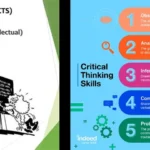What Are the 4 Stages of Self-Awareness? Unlocking the Key to Personal Growth and Understanding:Are you ready to embark on a journey of self-discovery? In this blog post, we will delve into the fascinating world of self-awareness and explore the four stages that shape our understanding of ourselves. From the awareness of our brain and body to our surroundings and other people, each stage brings us closer to unlocking the power of self-awareness. So, grab a cup of coffee, sit back, and prepare to uncover the secrets of personal growth and transformation. Let’s dive in and explore the intriguing four stages of self-awareness together.
Understanding the 4 Stages of Self-Awareness
Self-awareness is the conscious knowledge of one’s character, feelings, motives, and desires. The journey to self-awareness involves several stages, each building upon the other. These stages are not just steps but represent a deepening relationship with the self and the environment.
1. Awareness of the Brain
Mindfulness and Intellectual Awareness
At the core of self-awareness is the brain’s awareness—understanding how our thoughts and cognitive processes influence our behavior and emotions. The practice of mindfulness is a key component here, as it allows us to observe our thoughts without judgment. By recognizing our intellectual capabilities and limitations, we can foster a habit of reflection, which is critical for personal growth.
Judgment Awareness and Ingrained Thought Patterns
Understanding our judgment awareness and ingrained thought patterns is also crucial. It involves recognizing the biases and assumptions that shape our worldview. The Johari Window’s Open Area quadrant reflects this aspect, wherein others can see aspects of ourselves that we readily share and are also aware of.
2. Awareness of the Body
Physical and Emotional Dimensions
The body is our physical vessel, communicating much about our state of being. Tuning into physical sensations and reactions is a form of self-compassion. This awareness extends to the emotional dimension, where recognizing and accepting our feelings becomes a foundation for emotional intelligence.
Self-Compassion and Feedback
Self-compassion is treating oneself with the same kindness and understanding one would offer a friend. It involves acknowledging one’s own suffering, imperfections, and humanity. Feedback from others can help us become more aware of our physical and emotional responses, guiding us toward better self-care.
3. Awareness of Your Surroundings
Environmental Awareness and Reflection
Our surroundings influence our thoughts, emotions, and actions. Environmental awareness means being cognizant of the space we occupy and how it affects us. Reflection on these interactions allows us to adapt and thrive in various settings.
The Hidden and Unknown Areas
The Johari Window’s Hidden and Unknown Areas represent aspects of ourselves that are not apparent either to us or to others. Becoming aware of these areas requires exploration and the willingness to confront the unknown within us.
4. Awareness of Other People
Spiritual Awareness and Generalized Other
Understanding others goes beyond mere observation—it involves empathy and the capacity to see the world from multiple perspectives. Spiritual awareness can help us connect with others on a deeper level, while Mead’s concept of the “generalized other” invites us to consider the community’s norms and attitudes.
Emotional Awareness and Self-Confidence
Being aware of other people’s emotions and our own emotional responses to them enhances our relationships. This awareness is tied to self-confidence, empowering us to communicate with clarity and intention.
The Four Dimensions of Self-Awareness
Physical, Spiritual, Intellectual, and Emotional
The journey to self-awareness is multi-faceted, encompassing the physical, spiritual, intellectual, and emotional dimensions. Each dimension offers a unique lens through which we can understand ourselves and the world around us.
The Four Types of Awareness
Connecting the Dots
The four types of awareness—environmental, emotional, judgment, and ingrained thought patterns—interact with the dimensions of self-awareness. Together, they form a comprehensive framework for understanding the self.
The Stages of Self According to Mead
Imitation, Play, Game, and Generalized Other
George Herbert Mead’s stages of the self—imitation, play, game, and generalized other—highlight the development of self-awareness through social interaction. These stages reflect the increasing complexity of our relationships with others.
The Power of Self-Awareness
Influencing Outcomes and Decision-Making
Self-awareness is not passive; it enables us to influence outcomes and become better decision-makers. By understanding ourselves, we can navigate life with greater ease and purpose.
Building Confidence and Understanding Perspectives
The confidence that stems from self-awareness is transformative, allowing us to communicate effectively and empathize with others. It also frees us from biases, opening us up to new perspectives.
The Johari Window
The Four Quadrants of Self-Discovery
The Johari Window is a psychological tool that illustrates the process of self-discovery through four quadrants: Open, Blind, Hidden, and Unknown. It serves as a guide for understanding and developing self-awareness.
The Keys to Self-Awareness
Intention, Diversity, Skills, and Context
The four keys to self-awareness are being intentional, thinking differently, building skills, and changing your context. These keys unlock the door to dynamic action and personal development.
Developmental Stages in Psychology
Industry Versus Inferiority
In Erikson’s Stage 4, children learn to master new skills, leading to a sense of industry. This stage is critical for developing self-awareness as it relates to abilities and self-efficacy.
The Fourth Stage of Consciousness
Turya: Beyond Identification
Turya, the fourth stage of consciousness, is characterized by a detachment from all identifications, culminating in pure awareness. It is the ultimate state of self-awareness, transcending the physical, spiritual, intellectual, and emotional dimensions.
In conclusion, the 4 stages of self-awareness are a roadmap to understanding ourselves and our place in the world. They challenge us to grow and adapt, ultimately leading to a more fulfilling and aware existence.
FAQ & Common Questions about the 4 Stages of Self-Awareness
Q: What are the 4 stages of self-awareness?
A: The 4 stages of self-awareness are: Stage 2 – Situation, Stage 3 – Identification, Stage 4 – Permanence, and Stage 5 – Self-consciousness or meta-self-awareness.
Q: What are the four keys to self-awareness?
A: The four keys to self-awareness are: being intentional, thinking differently, building skills, and changing your context. These keys can help you move from passive self-awareness to dynamic action.
Q: What are the four pillars of self-awareness?
A: The four pillars of self-awareness are: optimism, humility, forgiveness, and gratitude. These pillars are essential for living a self-aware life.
Q: What are the five elements of self-awareness?
A: The five elements of self-awareness are: self-concept, perception of oneself, being intentional, thinking differently, and building skills.
Q: What is Stage 4 in psychology?
A: Stage 4 in psychology is known as the Industry Versus Inferiority stage, which occurs between the ages of 5 to 12 years. During this stage, children are immersed in education and learning, with teachers playing a crucial role in their growth.
Q: What is the 4th stage of consciousness?
A: The 4th stage of consciousness is called Turya. In this state, there is no identification with any of the koshas (layers of existence), and there is a perfect, pure awareness of Awareness.





